History is full of 'what if...' moments, where the whole trajectory of the world and society seems to turn on a six-pence. Whatever you call it, the theory also affects the motoring world. Here, Autocar's writers imagine their favourite trajectory-changing moments.
What if... John Scott-Ellis had been doing 10mph more?
On 22 August 1931, John Scott-Ellis, the future 9th Baron Howard de Walden, is driving a small Fiat through the streets of Munich. This is a brave thing to do because young master Scott-Ellis is only 18 years old and an inexperienced driver.
But the weather is good, the traffic is light and he feels at ease. He drives up Ludwigstrasse and then turns right into Brienner Strasse, at which point a man walks straight out in front of the car. What actually happens is that the man is knocked briefly to the ground, gets up unharmed, apologises for not looking where he is going and that is that.
But let’s say Scott-Ellis is doing perhaps 30mph rather than 20mph. Now there is a sickening crunch. And by the time the ambulance arrives, the man, who appears to be in his mid-forties, is in a very bad way indeed. They scoop him off to hospital and do their very best but soon it becomes clear the situation is hopeless. The man never recovers consciousness and dies in his sleep three hours after the crash.
Scott-Ellis is understandably distraught even though his passenger, a friend of the family called Pappenheim and the person in whose house he is lodging, assures him the man never even looked left and simply stepped into the path of the Fiat. No one could have avoided the accident.

But Scott-Ellis is advised that the authorities may not see it in quite the same way. The Great War had ended little more than a dozen years earlier, people have long memories of young Britons killing German citizens and Pappenheim is concerned that, should he be charged with causing death by dangerous driving, he may not get a fair trial.
Happily, Pappenheim is very well connected and has young Scott-Ellis over the border and into Switzerland before the sun goes down and news of the accident starts to spread. For it is news. It turns out the man who died is not a German citizen at all, but an Austrian, who’s been making headlines of his own for a while now.
The man was called Adolf Hitler, and had he lived, he would have gone on to commit crimes of a kind and on a scale that defies human comprehension. Compared with this, it seems rather tasteless to point out he’d also not have been around to commission Ferdinand Porsche to make his People’s Car, which would probably mean no Porsche and, indeed, no 911 either.
On balance, it would have been rather better if Scott-Ellis had just kept his foot down. - Andrew Frankel
What if... Adrian Newey hadn't left Williams?
As Damon Hill reflects in our exclusive interview in this issue, he had a lot to thank Adrian Newey for when he won his Formula 1 world title in 1996.
The genius aerodynamicist, in partnership with the brilliant engineering of Patrick Head, made Williams almost unstoppable during chunks of that decade. But then Newey walked away.
Why? Because he wanted to be included in the big decisions, for team founders Frank Williams and Head to bring him properly into the fold. But Frank’s decision to drop Hill in the middle of his drive to glory, without consulting a frustrated Newey, was evidence it would never happen.
He felt compelled to move on. The Williams team claimed what became its last championship (to date) in Newey’s FW19 swansong in 1997, by which time he was working his alchemy on reviving Mercedes-powered McLaren. But what if he’d stayed?

Williams lost its eminence after 1997 when engine partner Renault (briefly) withdrew from F1. Even Newey couldn’t have made up the difference with what was now a customer version of the great V10 engine. But then Williams already had a new partnership with BMW in the works, which began in 2000 and really came on song a year later. The German V10 was soon the new power benchmark in F1.
So without Newey, the McLaren revival might never have taken off. Which means Mika Häkkinen probably wouldn’t have beaten Michael Schumacher and Ferrari to his pair of world titles in 1998 and 1999. But then would Schumacher’s record-breaking run of Ferrari success have been curtailed by a Newey-designed Williams-BMW? As it was, Williams-BMW’s Juan Pablo Montoya and Ralf Schumacher were the closest threat to Michael’s Ferrari during his red pomp. With Newey still on his famous drawing board at the Williams base in Grove, might they have pushed him further?
We could go on. Like Newey, BMW eventually became frustrated by Williams and the partnership was dissolved in 2006. But with greater Newey-inspired success, might the divorce have been avoided – actually, probably not! Williams would still have been Williams… But in this scenario, the timeline that led Newey from Williams to McLaren to Red Bull, where he finally found the freedom and control he desired, would have been disrupted.

Perhaps Christian Horner would still have wooed Newey to Red Bull for 2006, to eventually give Sebastian Vettel the tools to win four consecutive titles and now to unlock the talents of Max Verstappen. But Newey’s route to Milton Keynes probably wouldn’t have required an eight-year diversion to Woking. For more than anyone, that would have been Häkkinen’s loss. - Damien Smith
What if... BMW hadn't bought Rover in 1994?
It’s more than 25 years ago, but many of us still remember the furore at the beginning of 1994 when we learned from news bulletins that BMW was buying an 80% stake in Rover Group. The expert consensus was that this clever and successful German company would bring much-needed rigour, engineering prowess and investment cash to the UK’s diminished and last surviving volume motor maker.
Too bad for Honda, we thought, already a 20% Rover shareholder and a contributor of reliable and desirable models to the Rover UK line-up since 1979. True, it had done a sterling job and was deeply miffed by the deal, but what of it? It had been offered a chance to bid for a majority stake in Rover, and all’s fair in love, war and big business…
Rover’s owner, British Aerospace, was delighted at the prospect of being paid £800 million for 80% of something it had been more or less gifted by the government. It had paid just £150m five years earlier, done almost no investing and recouped a good deal of that money by selling 20% to Honda in 1989. Wider public opinion of BMW was favourable, carried along on the reputation of the firm’s products. Who’d have imagined the Germans would step away just six years later, selling the biggest and most troublesome bits of the business to four self-serving directors for a symbolic tenner?
Because of that, the question will always linger: if Rover had instead kept its relationship with Honda, which had been loyally maintaining its UK link for 15 years, what would have ensued?

It is sometimes argued that with Honda as senior partner, Rover might still be a going concern. At the time, Honda was already making cars in decent numbers in Swindon, while also supplying designs, panels, engines and running gear to Rover. The Japanese firm had even let it be known that part of its reluctance to match BMW in any race for majority ownership of Rover was ethical: it didn’t believe it was right to sweep in and take ownership of one of the UK’s largest surviving industrial conglomerates.
Signals from Japan had made it clear the 20% stake might have been increased, but Honda would never take a majority. But without BMW, Rover’s Honda-centric range of dependable but undistinguished cars would probably have increased, notably by the addition of Rover-badged SUVs like the HR-V and CR-V and of successors to the successful 200 and 400 models, among the best-looking cars in their classes at the time.
But hold hard: without BMW’s British operation, we wouldn’t now have a highly successful Mini operation in Oxford (more than 10 million cars on the road so far). We wouldn’t have the Hams Hall engine plant making the latest-generation three- and four-cylinder engines, or the recent deal with JLR to make EV drive units in Britain for future BMWs, Jaguars and Land Rovers. And it’s arguable we might not now have the benefits of BMW’s resuscitation of Rolls Royce, originally orchestrated by Anglophile BMW chief Bernd Pischetsrieder.
It’s easy to criticise BMW’s overconfident 1994 arrival at Rover and its chaotic retreat just six years later, but we need to acknowledge that it has created a series of important, future-proof businesses here. Honda, by contrast, has retreated from Europe to concentrate its manufacturing in the US and Japan, a policy brought into focus by the recent closure of its Swindon plant, once a flagship.
Bottom line? Before we start imagining how life might have been without BMW’s arrival here in 1994, we should be careful what we wish for. - Steve Cropley
What if... Villeneuve had lived beyond 1982?
There are many ‘what ifs’ when it comes to racing drivers. What if Stirling Moss hadn’t crashed at Goodwood in 1962 but raced on into the 1960s in rivalry to Jim Clark?
What if Clark had missed the unimportant Hockenheim Formula 2 race in which he died in 1968 and lived to experience slick tyres and downforce in the 1970s? How about Ayrton Senna surviving Imola 1994 and fighting on against Michael Schumacher’s Benetton? All tantalising, all tragic. Gilles Villeneuve living beyond Zolder 1982 fits that bill, too.
For some of us, the little Canadian remains motor racing’s ultimate cult figure, a no-compromise purist who lived (and died) on the edge. But there’s also a school of thought that he was much more than that. Beyond the wild moments (three-wheeling at speed back to the pits at Zandvoort in 1979 always springs to mind), he had otherworldly car control, was scrupulously clean in wheel-to-wheel battles and was also more sensitive to his machinery than many give him credit for.
He knew how to ‘win clever’, like Alain Prost. Jarama ’81, when he used his Ferrari turbo power to just hold off a string of potentially faster cars, is the proof. So his impact on F1 through the fuel-conserving mid-1980s and perhaps beyond would have been significant.

Villeneuve was apparently ready to leave Ferrari and sign for McLaren for 1983. Ron Dennis wouldn’t have needed to pull Niki Lauda out of retirement to win a third world title in ’84 if he’d had Villeneuve in harness.
Prost could still have joined as he did that year, but he’d have faced his friend Gilles instead of the wily Lauda. Who would have prevailed in that first year together? How about in 1985, when Prost won his first crown with relative ease? And which of the two would have been forced to make way for Senna when Honda joined forces with McLaren in 1988, triggering a new era of Day-Glo-and-white domination?
Also, picture Villeneuve in a mid-1980s F1 car with a 1000bhp-plus qualifying engine strapped behind his shoulders… That would have been something. It’s a parallel timeline rich with ‘what if’ possibilities. - Damien Smith
What if... There had been a Saab version of Chevrolet's Volt?
While General Motors battled to give birth to a production version of its sensational plug-in hybrid Volt concept of 2007, Swedish subsidiary Saab was engaged in an increasingly torrid battle to survive.
At the heart of both events was the same man. Bob Lutz was one of the motor industry’s most famous ‘car guys’ and, at the age of 66, had been persuaded to join GM as its number two, charged with sorting out a mostly dire product line-up.

It was a massive task and central to it was his desire to outdo Toyota’s increasingly successful Prius with a car that would leapfrog its technology. The plug-in hybrid Volt and its Vauxhall-Opel Ampera siblings were ingeniously pioneering machines whose technical content mostly matched the considerable hype around them.
The ingenuity came at a price, though, one that European buyers, then wedded to the economy and torque of diesels, found hard to fathom: the Ampera cost nearly double the price of the similarly scaled Astra.
Saab, meanwhile, was suffering from an endlessly changing GM product plan and, with Lutz’s arrival, the scepticism of a car guy who just didn’t get the Swedish marque. Lutz reckoned its cars were for tweed-jacketed university professors and was unable to convince himself that Saab could ever appeal to a wider audience.
He proceeded to trash it with the Subaru Impreza-based Saab 9-2 (or Saabaru) and the Saab 9-7X, a clunking great Chevrolet-based SUV whose essence ran counter to everything Trollhättan stood for. Then came the Lehman Brothers crash of 2008, followed less than a year later by the bankruptcy of GM itself. A condition of the US government bailout was a culling of brands that gave Lutz the excuse he needed. Saab was to be shut.
The Volt was launched on time in 2010 despite GM’s travails. There was plenty of admiration for the achievement, but rather less of a flurry in showrooms. Toyota’s worries for the Prius rapidly evaporated, and so did GM’s sales forecasts, especially in Europe. The high price, the need for a wallbox charger, the novelty of the tech – all counted against the Ampera, as did its prosaic branding. Vauxhall and Opel customers weren’t used to being trailblazers. GM hedged its bets with a Cadillac version, a coupé called the ELR, launched in 2014. Sales were miserable.
Yet the brand that could have carried the concept and its price was surely Saab. Its cars were innovative, premium, often green and bought by people who thought hard about their wheels. The Voltec drivetrain would have given Saab the USP it badly needed, and its talented designers a truly exciting package to work around. - Richard Bremner
What if... BMW had made the Pininfarina 1100?
“Sir Leonard, I think you ought to have another look at things because I’m not sure that these are up to the foreign competition.” The words are the Duke of Edinburgh’s, “Sir Leonard” is Leonard Lord, boss of the British Motor Corporation, the year 1954.
The duke’s visit was more than a freshly painted gates and red carpet event, because he was a keen motorist with a good grasp of the motor industry. His host was a bluff, gruff, high-energy, get-things-done individual who was uncomfortable in the presence of aristocrats, still less royalty. Despite his successes, Lord was a man with an inferiority complex.
Sufficiently so that he made his excuses halfway through the day, leaving the duke and other BMC high-ups to enjoy a convivial lunch. After which they visited the styling studio, where the duke was presented with an oddball array of future models. Unimpressed, he advised the reappearing Lord to think again.
Lord had tersely rebuffed previous management suggestions that Pinin Farina should be engaged, but the next day Lord was on the phone to Turin. Farina would go on to design or redesign every model in the BMC range apart from the Morris Minor and the Mini, to which the tiniest of improvements were suggested.

Easily the most popular Pininfarina design was the Morris 1100, Alec Issigonis’s bigger Mini. This compact front-wheel-drive, fluid- and rubber-sprung four-door was the world’s most advanced small saloon when it was launched in 1962. The Morris 1100 – and its Austin, Wolseley, MG, Riley and Vanden Plas siblings – rapidly became Britain’s best-selling car, a position held for 10 years.
It made sense, then, for Pininfarina to produce a conceptual successor. But first, it would produce a spectacular show car based on the third of the Issigonis front-drivers, the Austin 1800. Slow-selling, almost ugly and with ergonomics requiring you to use a foot to adjust the heater, this robust saloon was prime fodder for a makeover. And what a makeover it was.
The 1967 BMC 1800 Aerodinamica was a bold, sleek, two-box hatchback that shone a light on the future of European car design. Mere months later, Pininfarina followed up with the same idea miniaturised and based on the 1100. Both three- and five-door versions were built, British Leyland (as it now was) receiving a three-door. Here was another chance for BL to leap ahead, with a car that would have beaten the Volkswagen Golf to market by two years.
Better still, it would have avoided the disaster of the 1973 Austin Allegro, which made less than a third of the sales of the 1100/1300. But this time, the clear-eyed duke had no chance to intervene. - Richard Bremner


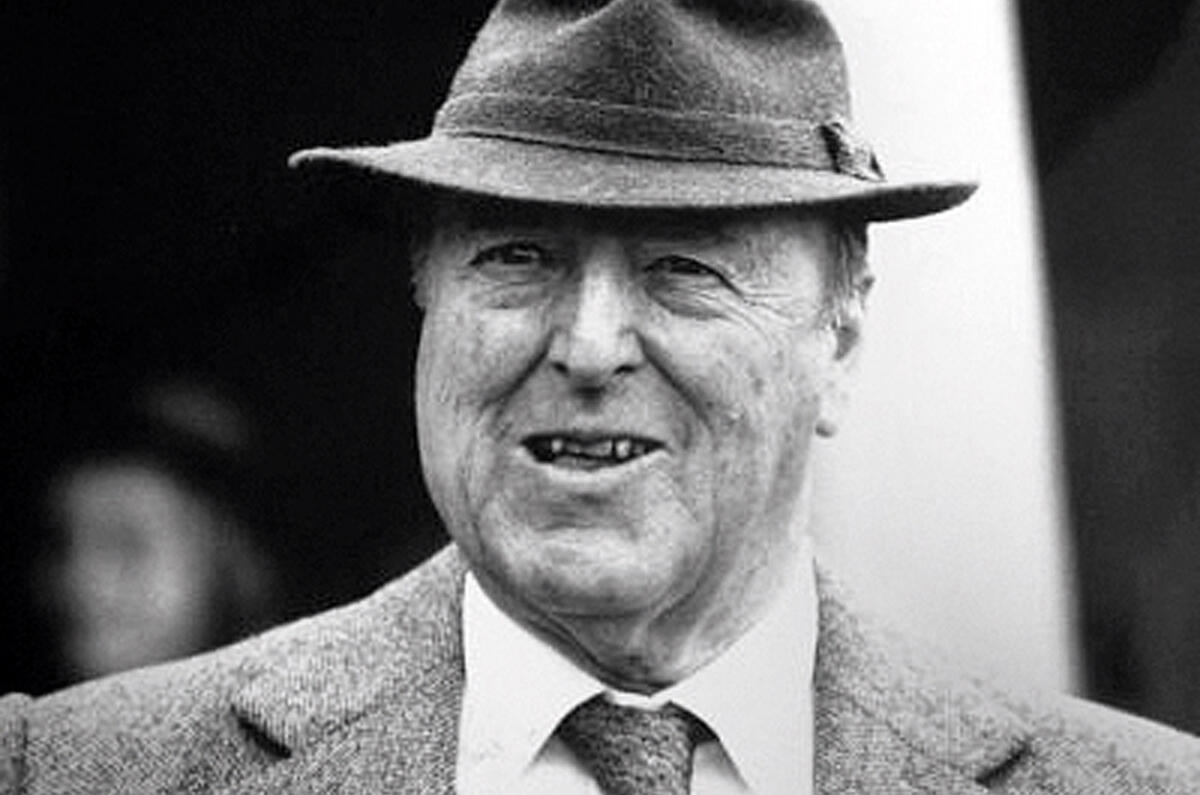














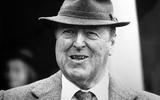








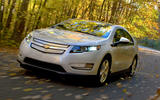

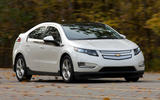

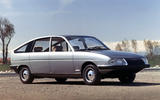


Join the debate
Add your comment
Bmc not Bmw and the Pinifarina 1100...
Even with BMW adjusted to BMC in the heading to read "What if BMC had made the 1100", the heading still makes no sense, because Pinifarina did make - that is, design - the 1100
I think the heading should have read "What if BMC had made the 1800"